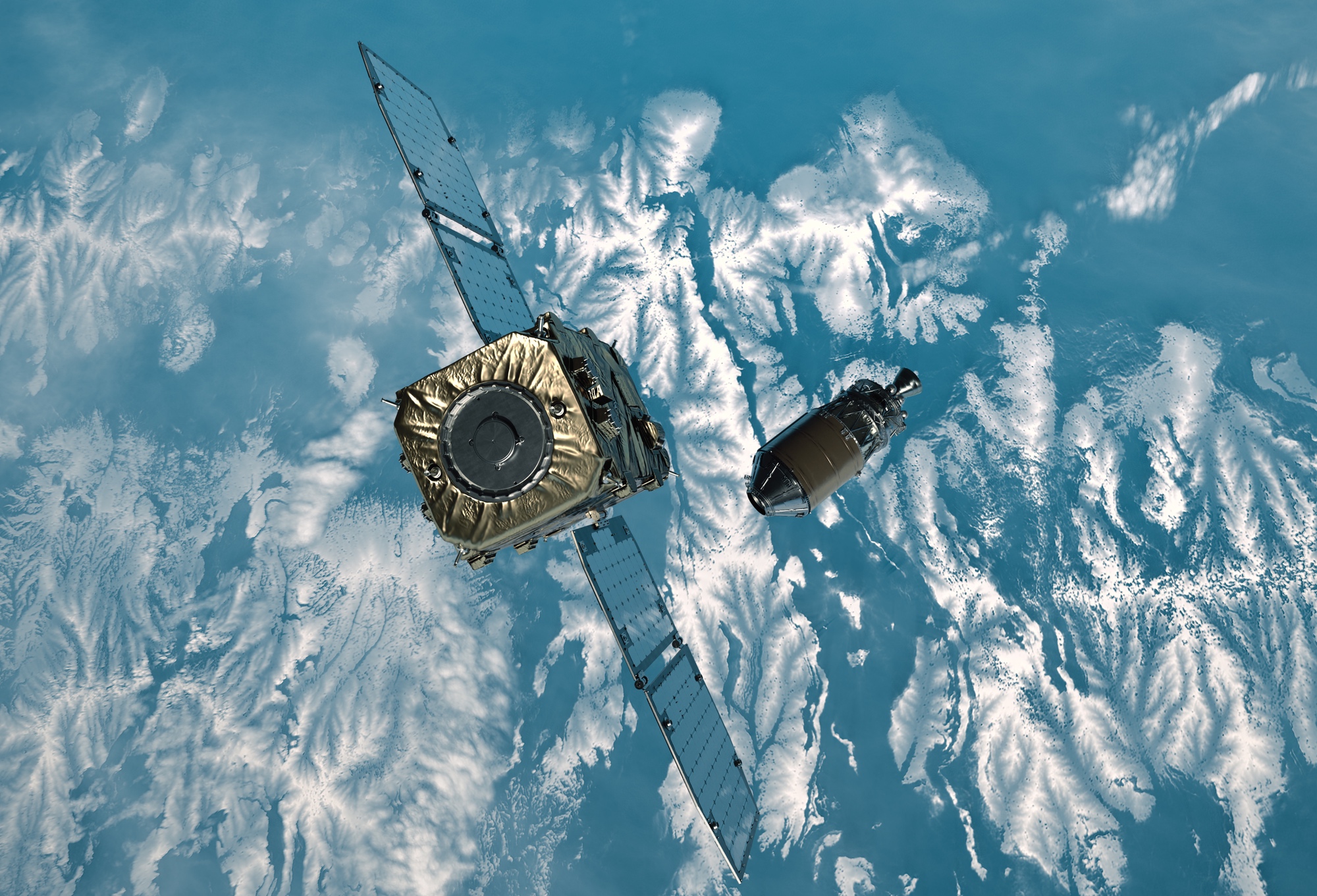Updated 12:45 p.m. Eastern with confirmation of contact with satellite after deployment.
WASHINGTON — A Rocket Lab Electron launched an Astroscale spacecraft that will rendezvous with and inspect a spent upper stage in low Earth orbit as a precursor to removing it.
The Electron lifted off from Rocket Lab’s Launch Complex 1 in New Zealand at 9:52 a.m. Eastern Feb. 18. The launch was the second this year for the company after the Jan. 31 launch of four satellites for space situational awareness company NorthStar Earth and Space.
The sole payload for this launch was the Active Debris Removal by Astroscale-Japan (ADRAS-J) spacecraft. The 150-kilogram satellite was released into an orbit of about 600 kilometers 64 minutes after liftoff.
Astroscale said in a statement that it made contact with ADRAS-J after deployment. “This milestone signals the start of our mission, and we are excited to survey and characterize a real piece of debris through our innovative rendezvous and proximity operations capabilities,” said Eijiro Atarashi, project manager for ADRAS-J at Astroscale.
ADRAS-J was developed by Astroscale as the first phase of the Japanese space Agency JAXA’s Commercial Removal of Debris Demonstration, or CRD2, program. The goal of ADRAS-J is to approach the upper stage of an H-2A rocket, 11 meters long and 4 meters in diameter, that launched the GOSAT Earth observation satellite in 2009 and inspect it. A future second phase of the CRD2 program will send a spacecraft to the upper stage to attempt to deorbit it.
“This will be, to my knowledge, the first mission that will approach and rendezvous with an actual piece of space debris,” said Mike Lindsay, chief technology officer of Astroscale, during a panel discussion at the Space Debris Conference organized by the Saudi Space Agency Feb. 12. “What we’re going to do is assess the state of this space debris, see how it’s moving, how it’s tumbling, what is its condition, really trying to determine if it’s safe to approach with a follow-on mission.”
Astroscale officials said in a September briefing that the mission had several milestones to demonstrate rendezvous and proximity operations (RPO), including the ability to safely approach and operate around the upper stage while collecting information about it to aid a future mission to grapple and deorbit it.
“The key to the mission is demonstrating the most challenging aspects of RPO technologies,” Gene Fujii, chief engineer of Astroscale, said at that briefing. He said Astroscale expected the ADRAS-J mission to last three to six months.
ADRAS-J was completed last fall and planned to launch in November, but was delayed by a September Electron launch failure. Astroscale said at the time it did not plan to switch launch providers because of the delay, and Rocket Lab argued that the mission was only possible through a dedicated launch like Electron that placed the spacecraft into a specific orbit close to the H-2A upper stage.
“Our next mission is an orbital rendezvous mission,” said Sandy Tirtey, director of global commercial launch services at Rocket Lab, during a panel at the SmallSat Symposium Feb. 7, referring to the upcoming ADRAS-J launch. “There is no way you could do this on a rideshare.”
ADRAS-J is Astroscale’s second mission, after the End-of-Life Services by Astroscale demonstration (ELSA-d) mission launched in 2021. ELSA-d demonstrated rendezvous and capture technologies using a servicer and client spacecraft, although those tests were complicated by the failure of four of eight thrusters on the servicer spacecraft.
“We definitely learned a lot from ELSA-d,” Fujii said at the September briefing. That included not just hardware design and software development but also operations, which featured a mix of autonomous operations and those handed by ground controllers. “To figure how to balance between autonomy and ground interactions for safety was a really tricky thing to put together.”
Astroscale announced Jan. 24 that it had completed mission operations for the ELSA-d servicer and client spacecraft after performing maneuvers by the servicer to lower its orbit. The servicer spacecraft will reenter in about three and a half years, the company said, while the client spacecraft, which lacks propulsion, is expected to deorbit within five years.
Related
Read the original article here
